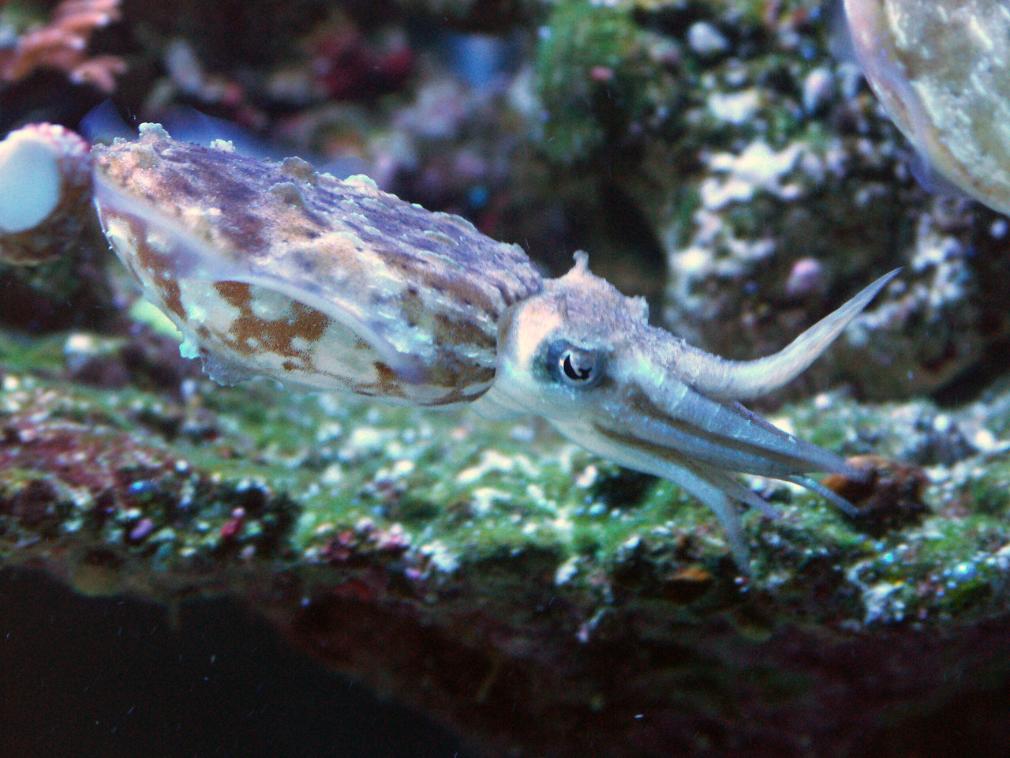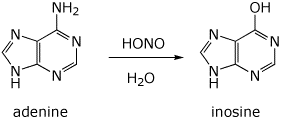Introduction
- The idea for this project came out of recent research the RNA editing capabilities housed within the genome of cephalopods.
- Found that RNA (instead of DNA) is highly edited in Octopus sp.
- Occurs mostly in neurological tissue, but can also occur in other peripheral tissues.
- Cuttlefish have not been studied.
- In preparing for RNA transcriptome analysis, we realized that we did not have a reference sequence to compare our transcriptome analysis to, so we decided to sequence the genome as well.
Sepia bandensis

- Mollusca (phylum) —> Cephalopoda (class)
- Found off the coast of Philippines, Papua New Guinea and Indonesia in shallow water (water of 78-80F)
- Babies are about 0.5in, adults are up to 2-3 inches.
- 8 arms, with two rows of suckers along each arm, and two feeding tentacles with at least two rows of suckers along each
- Cephalopods have three hearts, a ring shaped brain, blue, copper based blood, and have a lifespan between 6 months and 3 years (Sepia bandensis lives about a year)
Chromatophores and skin shaping used to hide from predators/hunt
The cephalopod genome is roughly 2.7GB.
- There is no completed sequencing data on Cuttlefish (S. officianalis is being analyzed by Kim Worley’s group out of Baylor).
- We do not know the size of S. bandensis’ genome.
- We also don’t know how many chromosomes the organism has. S. pharaonic has 48 chromosomes (2N)
- A recent paper showed that RNA editing occurs at greater levels in colder water. Will be interesting to highlight RNA editing in warm water fish
RNA Editing
- A biological process in which an organism increases its adaptability by editing mRNA transcripts
- Can be paired with gene splicing (i.e. in humans)
- A to I RNA editing occurs when the adenosine is edited to an Inosine via deamination.
- The resultant nucleotide substitution is a Guanine/Guanosine

- The resultant nucleotide substitution is a Guanine/Guanosine
Why is this Important?
- RNA editing allows for the expression of functionally diverse proteins from a single gene (i.e. multiple transcripts from one gene) = enhanced adaptability
- I.e. in an environment where the surrounding temperature changes it is useful to have functional variants of a protein that allows for an increase in ion permeability through the membrane (i.e. increased action potential)
- Studying RNA editing in an organism allows us to answer questions about how the organism adapts to its environment.
Proposed Work
- Karyotype the organism (how many chromosomes does it have).
- Perform NGS of S. bandensis gDNA.
- Annotate the genome of S. bandensis (using S. officianalis genomic data as a scaffolding reference).
- Perform RNA Transcriptome analysis of all tissues.
- Assess frequency of A to G substitutions within the transcriptome.
- Determine which genes are edited
What needs to be done?
Cuttle Wranglin’
- Setting up a salt water reef tank
- Maintaining the fish until adulthood Tissue Processing
- Karyotyping
- Isolating neurological tissue and peripheral tissue
- Prepping gDNA, sending frozen tissues off for RNA library production Data analysis
- Genome assembly
- Transcriptome analysis
Links
Cuttlefish project google group.
Faculty - Jeff Rogers and Kim Worley
Videos
PBS video - KINGS OF Camouflage HD
Images from Daniel Pon